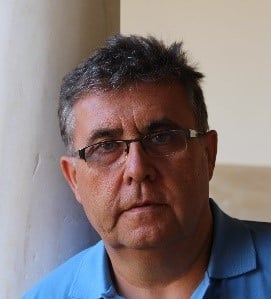Cultivating the Ecological Transition: Knowledge and Practices of Sustainability, Neo-Endogenous Development and Participatory Processes
A special issue of Sustainability (ISSN 2071-1050).
Deadline for manuscript submissions: closed (30 April 2022) | Viewed by 11866
Special Issue Editors
Interests: cultural and social anthropology; bio-cultural heritage studies; rural studies and cultural rural regeneration; human/animal relationships; digital cultural heritage studies
Interests: agricultural economics; sustainable rural development; alternative food chains
Interests: depopulation processes in rural areas of Spain and Europe; social and territorial effects of Common Agrarian Policy; LEADER approach and its impacts
Special Issues, Collections and Topics in MDPI journals
Special Issue Information
Dear Colleagues,
Europe seems to have reduced the emphasis on activating rural endogenous development processes, in the last programming cycle of the structural funds promoting measures and actions aimed above all at technological innovation and the competitiveness of agricultural and craft enterprises. Latin America, on the other hand, would seem to manifest the opposite attitudes, especially if observed from the perspective of urban demand, which has begun to appreciate food production that is not homologated to industrial standards, as bearers of other values such as peasant culture and its role in care and protection of ecosystems.
The enhancement of typical food productions had been promoted by Europe since the end of the 1990s, and the ‘Agenda 2000’ strategy strengthens and privileges the social dimension of sustainability in rural development policies, focusing on the self-reliance of small communities to increase their ability to control economic activities in their respective territories, in an attempt to stem the inexorable perverse effects of globalization, especially on the agricultural sector (i.e., squeeze).
According to the assumptions of endogenous development, local production should ensure sufficient production to satisfy the needs of the territories, adopting strategies capable of maintaining the same increasing shares of the wealth produced. This can be done through the adoption of forms of the self-management of community natural resources.
However, this model has proved to be of little use in the most fragile rural areas, for which it was primarily intended. These areas in fact have increasingly weaker demographic and economic bases due to depopulation and aging, and cannot stand without “exogenous” interventions to activate effective regenerative processes in their territories. The local level would therefore seem obliged to interact with the extra-local level, resorting to forms of cooperation which can be considered fully sustainable only when they ensure that the communities achieve their development objectives, respecting shared values and behaviors according to the so-called neo-endogenous development model.
This SI intends to collect contributions in line with this model, considering it a solicitation towards fruitful interactions between private economic activities and public institutions, enabling greater operability, reflexivity, and resilience in rural areas. This approach has often been associated with the creative revision of community practices, as well as bureaucratic and/or associative practices, in which local governance includes external or "neo-endogenous" actors, and participatory processes in planning local regeneration ensure the benefits of the local territory.
In a generalized condition of depopulation, only the direct involvement of the communities allows them to acquire the necessary awareness of the problems linked to their own development, thus identifying new forms of adaptation.
The success of the actions could therefore be subordinated to the competence and creativity of the political actors ("acting from above to facilitate action from below"), whose initiative will depend on the possibility of triggering virtuous processes of normative isomorphism.
The main themes to which the SI intends to orient itself are therefore bio-cultural heritage in rural, depopulated and fragile areas; the conservation and enhancement of biodiversity preserved as a guarantee of protection of environmental and socio-cultural landscapes and as a driving force for rural development; governance and policies of territorial rural development with particular attention to multicultural processes and the recognition of native/Indigenous/traditional/local cultures; practices and knowledge of organic and sustainable agriculture keeping together traditional knowledge and innovation; responsible and sustainable management methods of the controversial process of "green transition"; returning parties and newcomers in rural, inner, fragile areas; the transition to more sustainable models and the coexistence of rural development models.
In this Special Issue, original research articles and reviews are welcome. Research areas may include (but are not limited to) the following:
social and cultural anthropology, geography, rural economy, rural sociology, sustainable development studies, ecology.
We look forward to receiving your contributions.
Examples can be found at:
https://0-www-mdpi-com.brum.beds.ac.uk/journal/sustainability/special_issues
Prof. Dr. Letizia Bindi
Prof. Dr. Angelo Belliggiano
Prof. Dr. Eugenio Cejudo Garcia
Prof. Dr. Marcelo Sili
Guest Editors
Manuscript Submission Information
Manuscripts should be submitted online at www.mdpi.com by registering and logging in to this website. Once you are registered, click here to go to the submission form. Manuscripts can be submitted until the deadline. All submissions that pass pre-check are peer-reviewed. Accepted papers will be published continuously in the journal (as soon as accepted) and will be listed together on the special issue website. Research articles, review articles as well as short communications are invited. For planned papers, a title and short abstract (about 100 words) can be sent to the Editorial Office for announcement on this website.
Submitted manuscripts should not have been published previously, nor be under consideration for publication elsewhere (except conference proceedings papers). All manuscripts are thoroughly refereed through a single-blind peer-review process. A guide for authors and other relevant information for submission of manuscripts is available on the Instructions for Authors page. Sustainability is an international peer-reviewed open access semimonthly journal published by MDPI.
Please visit the Instructions for Authors page before submitting a manuscript. The Article Processing Charge (APC) for publication in this open access journal is 2400 CHF (Swiss Francs). Submitted papers should be well formatted and use good English. Authors may use MDPI's English editing service prior to publication or during author revisions.
Keywords
- bio-cultural heritage
- sustainability
- local and rural knowledge
- social innovation in agriculture
- green transition
- traditional/native cultures in agriculture
- fragile/inner areas
- biodiversity
- neo-endogenous development
- rural governance








